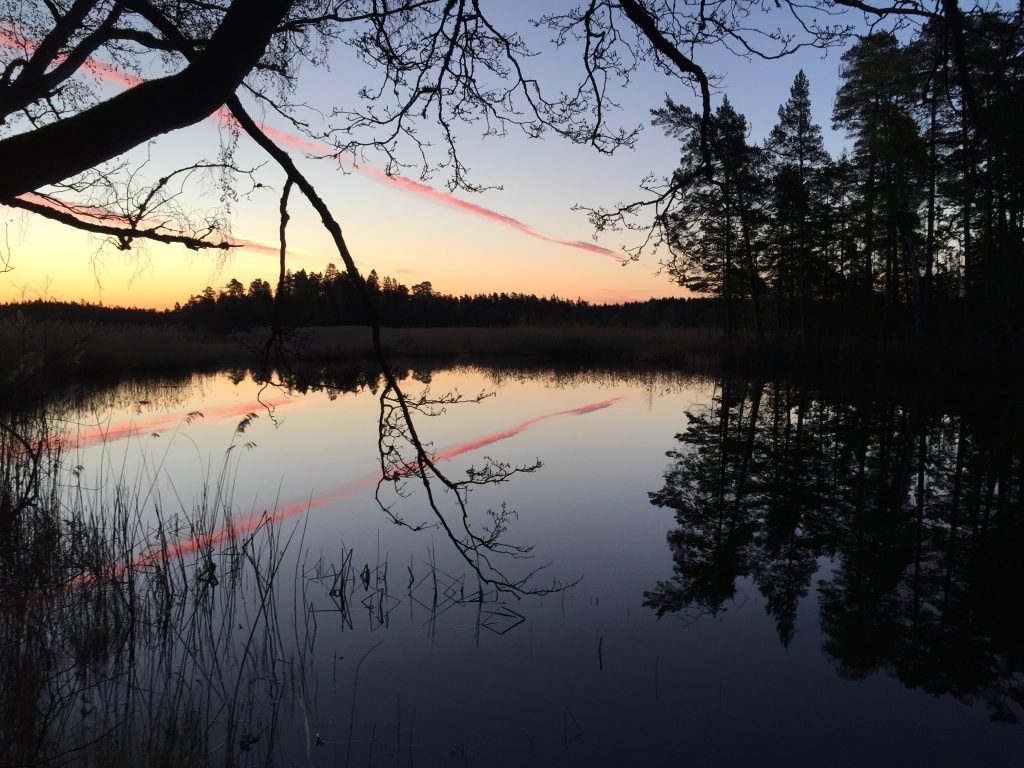
Jason Wolford, Senior Audio Designer and recording enthusiast, recently participated in the Introduction to Wildlife Sound Recording program hosted by the Wildeye International School of Wildlife Film-making. This incredible opportunity takes individuals that are interested in the sound recording of wildlife and environments and transports them to a remote location where they can learn more and become immersed in this incredible craft. On a trip hosted by BBC’s nature recordist Chris Watson and renowned artist Jez riley French, Jason traveled to a remote part of Sweden, where he did nothing but experience and capture wildlife sound.
The following clip is just one of the many beautiful recordings that Jason catpured.
[soundcloud url=”https://soundcloud.com/wirerecordings/wildeye-d100-clip-01″ params=”color=ff5500&auto_play=false&hide_related=false&show_comments=true&show_user=true&show_reposts=false” width=”100%” height=”166″ iframe=”true” /]
So Jason, why were you drawn to this experience in the first place? What made you decide to take this trip?
“I first heard about this group through the game audio podcast. Anton Woldhek had gone on the trip in Sweden at a time when it was, I believe, just him and the DICE guys. (You can find a link to these podcasts here and here.) It sounded like a wonderful experience to head out into the wilderness of Sweden with the sole purpose of listening, recording, and becoming better at the craft of capturing sound in the field. I started following the trips they would do over the years and talked to people that had gone. Everyone came back with a new perspective after going through the course. So it’s been something I’ve wanted to do forever.”
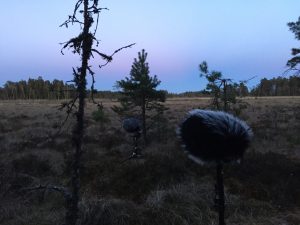
Okay, so when you officially signed up and bought your plane ticket, what happened from that moment to when you took off?
“I started prepping for real about 2 months before the trip. I own a field kit that I’m pretty happy with, technically and sonically, but it wasn’t particularly fast to set up. I had read Gordon Hempton saying in an article that you should be able to set up your rig in under 3 minutes. (To learn more, check out this article.) It’s a good rule of thumb. So I started drilling with the kit I had. I began experimenting in my backyard, trying to find the flaws in my gear. Did I need new mic cables, did I need better stands? Were some of my components failing? From there, I did ongoing troubleshooting.”
“I then began doing drills around the house, setting up my kit, capturing a small amount to see how things were working, and tearing it down. From there, I bought a big, 70L Osprey backpack which would hold all my tripods, both my recorders and all my blimps. And once a week I would go out and do a hike with the pack to see how it felt with all the gear in it. I would get the gear out and practice setting up. I didn’t have the intention of capturing anything because I was on very public trails. It was just about how quickly I could set it up and tear it down, testing to see if it was comfortable on my back and if I was breaking anything in the process. During that time, I refined what I was carrying and how I was carrying it. I also discovered some pretty big problems with my kit.”
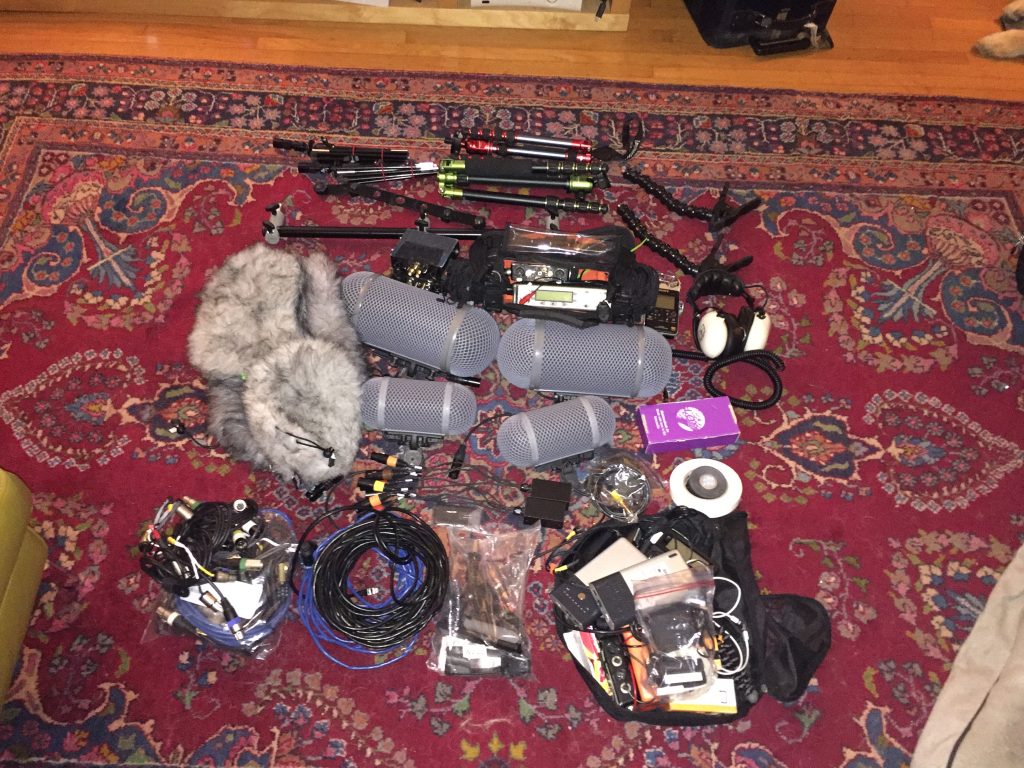
What were the kinds of problems you were discovering in your pre-trip planning phase?
“Over the course of testing my gear leading up to the trip, I realized I had several components that were failing in a major way. One issue was my Sennheiser Mkh 8040’s, which are fantastic mics, but pre-2013, Mkh 8000 series mics are prone to a certain type of failure that I didn’t realize I had. I started getting clicks and pops in one of my channels and was convinced it was from the preamp. However, during a conversation with my friend Andy Martin, he said, ‘Hey, you know this sounds like an issue with the Mkh 8000 series mics. Maybe you should look into that.’ And sure enough, it was. So, test your gear early is the lesson there. Overall though, Sennheiser was very helpful with the issue and repaired them free of charge.”
[soundcloud url=”https://soundcloud.com/wirerecordings/8040-static-01″ params=”color=ff5500&auto_play=false&hide_related=false&show_comments=true&show_user=true&show_reposts=false” width=”100%” height=”166″ iframe=”true” /]
“The other problem I ran into was failing preamps. I had four Aerco Preamps with Jensen transformers that I really love, one that I had bought new a decade ago, and the other 3 I bought used over the last year and a half. My intention was to use 3 of the preamps as the front end for my Sound Devices 744 and Sony PCM-D100, with one to spare. But, what I realized over the course of preparing for this trip was that I had 3 preamps all failing in very different ways. I was able to reach out to the maker of the preamp and he helped to get things in a place that I could be fairly confident about. But then 1 broke one in transit, and two failed while I was in the field. So, not the fault of the maker, I want to make that very clear, it just turned out that these were very used preamps that needed some extra TLC and service. And that’s on me for not prepping better.”
“So, I spent a lot of time going through my gear, listening to the individual channels and trying to make sure things were consistent from mic to mic and preamp to preamp. I had some really strange failures along the way, and in the end, when I was in Sweden, I ended up using a single Aerco pre and two channels of Sound Devices, which was more than enough for what I was doing.”
It sounds like you had quite the kit. Can you summarize all the gear you took on your trip?
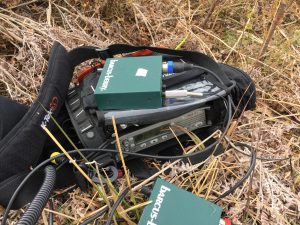
“I brought a Sound Devices 744 4 channel recorder, 4 Aerco preamps (The 744 only has two preamps built into it, so if you want to use all four channels you have to run a separate preamp on channels 3 and 4), Sony PCM-D100, 2 Sennheiser Mkh 8020 omni’s that I could have used on a space bar or on separate pairs of tripods. I also brought a pair of Sennheiser Mkh 8040’s running in ORTF, a Sennheiser Mkh 40 and 30 running in mid/side, a pair of Barcus Berry contact mics, an Aquarian Hydrophone loaned to me by Ben Gabaldon, and an Electrosluch RF mic. Along with all that, I brought Remote Audio headphones, which are Sony 7506 drivers inside of over ear protection that you would find in a rifle range. I also brought a pair of Redco 4 channel RJ45 to XLR, which allowed me to do very long runs of cable with just a single shielded cat-6 running between.”
“I also took tools, gaff tape etc… I definitely overpacked. I have chosen my gear carefully and some of it requires extra maintenance. I did not want to find myself unable to fix basic issues that came up. So I was happy that I brought things like a multimeter.”
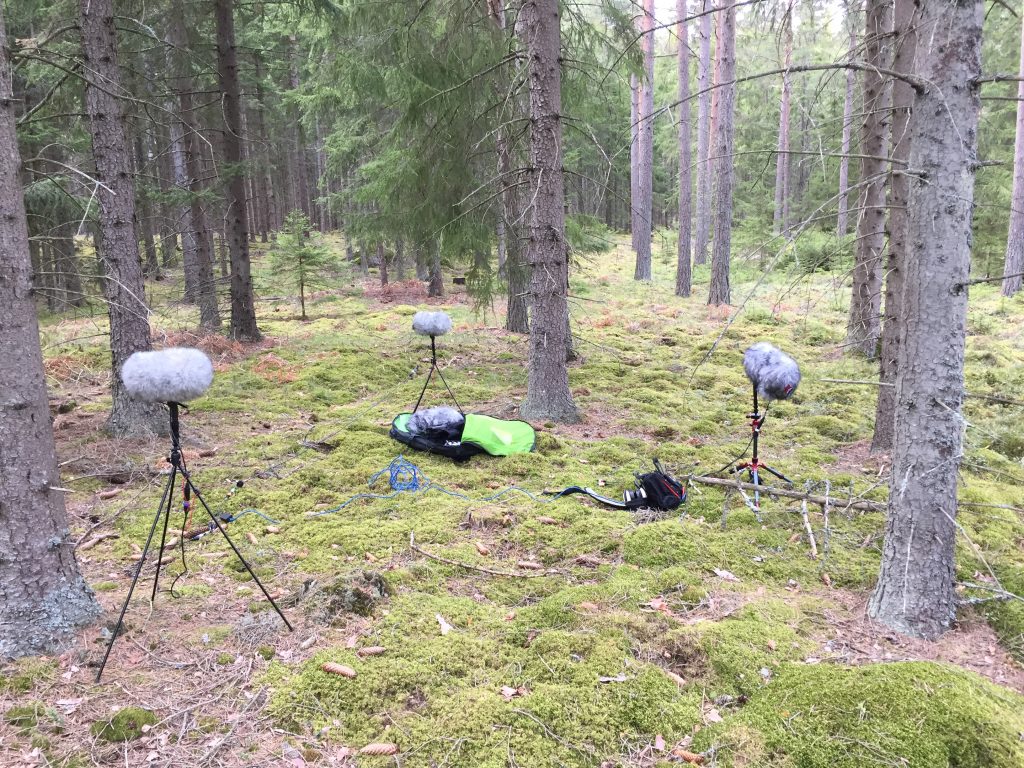
Looking back, knowing what you know now, if someone else was preparing for a trip like this, do you have any advice you would offer them?
“We didn’t do long hikes, but look at it as a hiking trip. My partner, Lucy, bought me some nice hiking boots, and I’m glad she did. I also brought a rain jacket and pants which I used more than I expected to just to keep warm. I forgot to bring a scarf and regretted it. Expect inclimate weather and pack accordingly.”
“Years in the studio taught me to keep things neat, so I use velcro on everything. And, Gore-Tex keeps you dry. But the sound of Gore-Tex rustling or velcro being pulled apart is like fingernails on a chalkboard when the ambient noise level is around 30 dB. I’m not sure what to replace them with yet. But it’s something I am very conscious of now.”
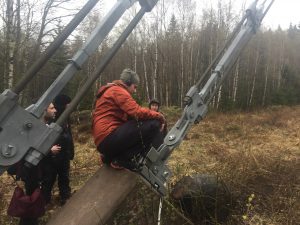
Overall, how was the trip run?
“We were staying at a fairly remote location, that had easy access to a lake with a lot of wildlife. So that was always available to us. There was a loose agenda of spots we wanted to hit, but if something better came up it was flexible. If the group wanted to do something different, we did something different. I was primarily there to learn from Chris Watson, who is known for his nature recording with BBC. But Jez riley French was also there, and he’s more of the creative, spontaneous guy, working with contact mics, hydrophones, and electromagnetic frequency mics. He was more about driving around looking for interesting things like, ‘Oh, look at that antenna.’ So we’d all pull over and slap contact mics on the cables supporting the antenna. Or we’d go past a harbor and would all pull over and drop our hydrophones into the lake. And that was something that I didn’t expect to get out of the trip. And it was kind of a nice change up. The nature outings were very different. We’d set up at 9 pm the night before, leave our mics and recorders out, go back at 3 am to push record and stay away from our mics until about 6:30 am. But that’s how it had to work. If we were going to capture the sounds of the dawn chorus we were after, then we had to work according to a schedule. So it was a very different experience.”

What there any moment in the trip that was particularly impactful? Something that might have been unique to that experience?
“I was only able to attend one dawn chorus, and if I had gotten no sound out of that, it still would have been worth it to see the sun rise from where we did. It was just beautiful. But what I heard was also amazing, because the world is so quiet and we hear birds, and then an odd crane will yell and it just echoes all over. Those moments I wouldn’t trade for anything. The experience itself was just so beautiful.”
Looking back on the trip now, what were some of your biggest takeaways?
“On the first day, which blew my mind a bit – and this was one of my biggest takeaways – is before Chris even got out his recording gear, he would go out and walk for an hour or more and just get to know the lay of the land. He’d try and figure out what wildlife was in the area and where the good spots were. People like us, we spent our days working in game audio and when we get the opportunity to work in the field, I’ll admit that I typically run blindly into the forest with all my gear, try and find a good spot, just press record, and what I get is what I get. And that is because I usually get a very small window in which to do this. So this was different in that we took time scouting and researching spots, and listening. Just listening. It was kind of retraining from what I’m used to.”
“Another big takeaway was recording levels and monitoring levels. I did music before I got into games and field recording, and we always try and get the hottest levels we can get to disk or tape. That’s how you get the best signal to noise ratio. But when we got out into the field, we were in some environments that were right around 30 dB. I was joking about how my next library is going to be named ‘Preamp noise and distant chain saws,’ because there were some recordings where I had cranked my preamp up all the way because the birds weren’t particularly loud. But Chris’ advice for people with more consumer grade recorders like the Zooms or the Sony’s was not to go above 70% gain when recording in the field. With more professional grade recorders you can go higher, but he recorded really quiet. I think he was peaking around -20dB or -30dB. And it was more than I was comfortable with.”
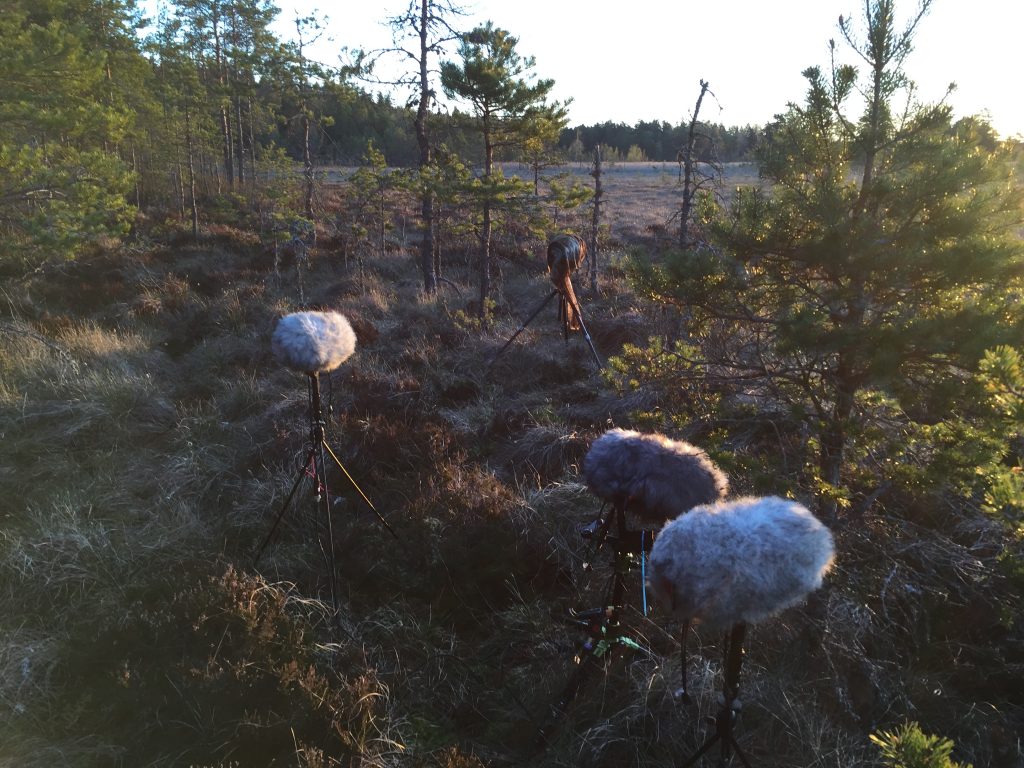
“The lesson is: don’t record too hot. When you do that, you never run the chance of clipping. So if I’m recording too hot and this crane shows up out of nowhere and lets out a bellow, then I’ve just distorted and there nothing I can do about that. The other thing was, for headphone monitoring levels, which I’m still wrapping my head around, was that Chris will have somebody who’s out with him speak to him in a normal conversation distance, record that, and then play that back in the phones at what would be a normal conversational level. Then, he’d mark it on his headphones and not touch it for the rest of the recording. My inclination has always been to turn up the gain and turn up the headphones so that I can hear what people are doing four blocks away or if a bird is singing a mile away. But that’s not the way he does things. I’m trying to adopt his style of recording.”
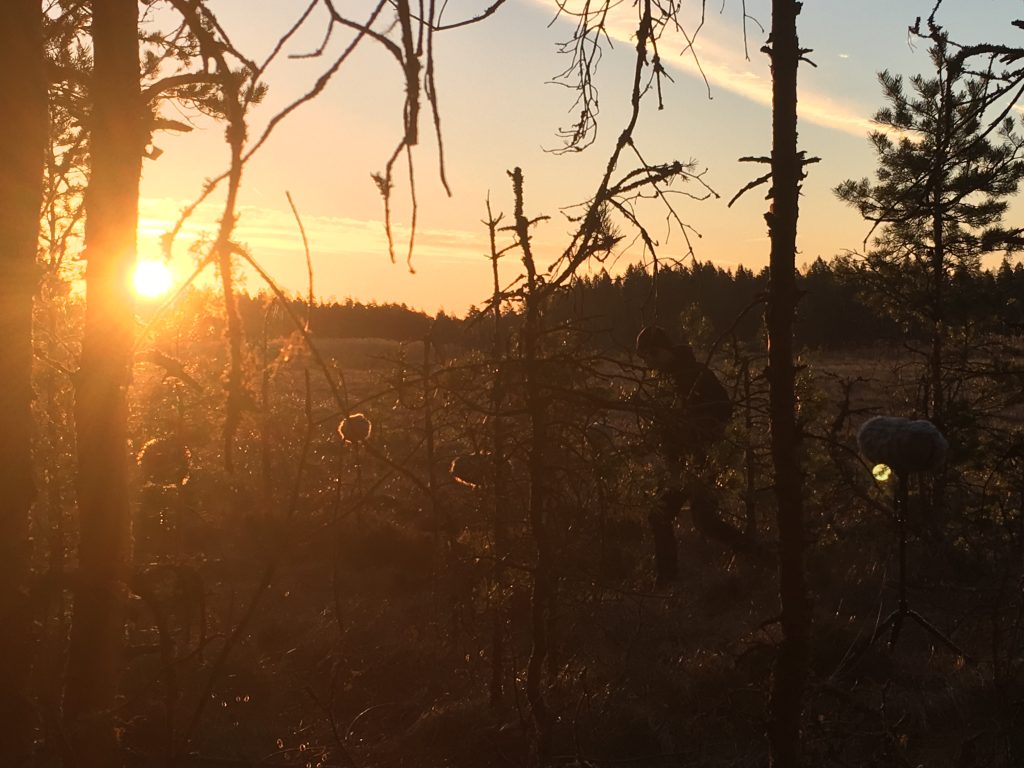
A big thank you to Jason Wolford for being willing to participate in this interview, and for providing access to all photos and clips. You can hear more of his recordings on SoundCloud at https://soundcloud.com/wirerecordings.
Excellent writeup, makes me regret not joining the trip. Quick question: wasn’t it easier to set up in the evenings and record overnight?
Thanks for the great write up. Would love to do one of these trips next year.
What kind of stand is that red one, pictured over the river?
wonderful insight!
Sorry I missed these questions.
@George
I was following Chris Watson’s lead regarding recording overnight vs coming out before first light to press record. In the end, this approach saved us all a lot of storage space. It also made for some good bonding among the attendees. This approach comes at the cost of lost sleep of course. Also, I would not have traded seeing the sun rise over rural Sweden for anything. That alone made the trip worthwhile. But yes, there are obviously times where letting the recorder roll or starting to record from a timer makes more sense.
@JD
The red tripod is http://promaster.com/Product/2675
I bought it on a whim as I was headed to the airport for the trip. In many ways (size/weight) I now prefer it to my Mefoto tripod. But both are great. Also, check this out, you can get on the waiting list, and people do drop out: http://chriswatson.net/2017/10/15/murmurations/
Thanks Jack!